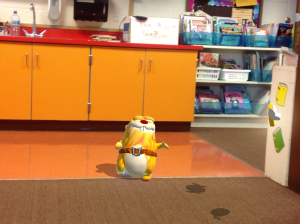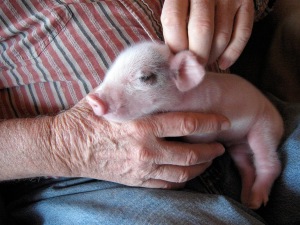Once you’re open to these fundamentals, they happen everywhere.

The rest of last week’s story is reflected upon here to share what can go on in the course of an educator’s week if those roots are tended. From a language arts group to a discussion about the need for change in mathematics education; from a lunch that boosted flagging spirits to a phone call from someone who went above and beyond to tell her students: “You matter,” these are small stories worth reading. (I’ll work on brevity as I go. Promise.)
Student Voices: Nurturing Independence; Finding Sparks
I arrived to my desk and some very strongly worded letters from students on my keyboard. Right where I would notice them. First thing.
They are precious to me in all their frustration, for they remind me that I ask for letters. My students know that they can and should file complaints. What they don’t always know is that a letter is a start of a conversation. If I receive one, we will be sitting down and talking about what prompted it and what needs to change. We’ll dig for the feelings behind the action and give them names.
Each of these letters are full page (front and back!) articulations of frustration over the direction our learning lab has taken. These carefully-crafted complaints had been ripped confidently from notebooks, their ragged urgent edges begging to be picked up and poured over.
The communication of frustration over directions becomes clear to me: it’s about what takes place in our learning lab on days when I’m at the other school. I should explain that I have a position that is split between two buildings on an every-other-day rotation. I’ve never taught in this way. I was always grounded in one classroom, so this orbit is new…and is it ever fraught with landmines! (I have a new appreciation for mobile teachers that I always admired but thought I could never be. I have so much to learn!)
The letters explained that on days I am not present no one seems to know what to do. They can’t get started. They end up bickering and getting shushed or corrected in the lab or library because they can’t agree on what to do. One person tries to lead and that doesn’t work. Another person branches off into his own thing, and that frustrates them, too. Tensions, confusions and chaos have reached a breaking point. The urgency of the increased size and slant of the script scrawling out on the pages tells me so.
At first the letters frustrated me right back.
I had no sooner set down my three heavy tote bags full of tech, files, shoes, a tangle of power cords, resources, and a thrown-together lunch, than I was being criticized for not teaching my students better when I’m not present.
Then I started to smile and laugh. These dear letters were a sign that my fourth graders were ready for a push. They needed me to teach them how to go forth independently as learners. To remind them that the best lesson or project plan is within each and every one of them, not me.
So I wiped down our conversation table with lemon-fresh clean, pulled the chairs around its steady circumference and awaited their arrival.
They trickled in, inspiration notebooks in hand. They glanced nervously at each other because I was at the table and seemed to be smiling.
“Thank you so much for your letters,” I said. They finally made eye contact. “Now lets figure out what needs fixing. Today is a conversation day, and you will leave with your own plan. But it starts with a spark. I can’t give you that spark, but I can help you find it.”
I pulled out a large piece of paper and our bucket o’ things to write and make with, and asked them to graffiti the differences between active and passive learners. (photo to come–I love their work!).
As we doodled and talked, grateful to have the creative element to take away some of the awkwardness of honestly sharing what bothered us, we faced our frustrations and replaced them with intention. I looked each child squarely in the eyes and asked them to tell me what they wanted to learn, discover, read, design, and do. Each one was able to find the spark and say it:
Two students are going to read Roald Dahl’s Charlie and the Chocolate Factory.
Another student is going to map out a design for his next game in Scratch.
Someone is going to research ant colonies and how they might inform robotics like the TERMES robots we’d been studying who were inspired by termites . (Who, by the way, can build unsupervised. Oh, how much like a robot-built structure or termite hill in Africa, the connections continue to mount!)
And then there’s the student who is going to brainstorm how she can help younger learners with a project that comes into play later in this post.
I ended the session with the charge to never wait for direction from me but find it in themselves.
Small thing. Mighty.
I can’t wait to see them after more independent learning days. Surely their work will be something I want to share with you.
More small things practiced through authentic assessment and an obstacle course

- Sharky “walking” around our learning lab space. He’s created in an augmented reality app. The iPad is really “looking” at Sphero!
I also found some ‘small things connections’ later this week in a fantastic little scenario with one of my small groups of third graders. We’ve been really fortunate to have some great technology this year that has impacted our learning, thanks to a collaboration with our tech director, a little interactive toy orb called Sphero, and the room to create a dynamic classroom space provided by my principals. My students have been engaging with Sphero in amazing ways, from simply learning how to control him (hand-eye coordination makes a comeback!), to programming it to do specific things and playing interactive and collaborative games. An example of this is a work in progress with these third graders, as they are designing an obstacle course for Spheros so that every child in our school can play and experiment with Sphero.
Seriously.
They want to share what brings them joy by coaching others to experience it in an interactive environment that they are building. It doesn’t get much better than that! I can’t wait to share more about that project, very much the antithesis of schoolosis.
Anyway, the small thing in this big project is that I challenged the team to interact as if our classroom was a workplace and they had some high stakes ahead. (Note: NEVER high stakes testing with me. More common: high stakes play. It’s much better for learning. Go watch children do it every day and join them.)
So we’re role-playing as engineers, writers, co-workers. And our principal?
She’s the CEO of this company, and they have to pitch their idea to her.
So they met in a little group on Wednesday to put the polishing touches on their presentation for Mrs. Stephens. They took turns at my desk workstation to type their letter outlining the proposal. The continued to sketch and dialog about their obstacle course. I joined in when they needed me and pulled away otherwise so they could do their serious work.
And then they started getting anxious.
“Wait. Is this like we’re going to get fired if she doesn’t like this? I’m nervous.”
“Did I sign my name correctly in cursive?”
I calmed them down by reminding them to believe in their project, share why they are so excited about it, and be sure ask for her ideas, too. I told them to keep playing. “Aren’t you having fun?”
The twinkle in their smiling eyes said it all.
I couldn’t have been more proud of this team of nine year olds. Mrs. Stephens was awesome in her new CEO role. She invited them to her circle table in her office and engaged them from the start, listening to their ideas, offering suggestions and asking great questions. (Mrs. Stephens knows how to play!)
“Does this mean we’re approved?” one asked, expectation in her voice.
“Yes. I can’t wait to see how this turns out,” Mrs. Stephens replied. “I know it will be something we all can be proud of.”
That little five-minute face to face interaction was such a highlight of this week.
The power of conversation and connection through play cannot be shared enough. The serious quality of the work was never developed externally by my direction. It happened through welcoming play in our learning space.
Talking Mathematics and Education with Diverse Perspectives
But wait. This week of conversations and connections continues. There’s the face to face planning that took place when a recent MIT graduate and graduate of the district in which I work came back to volunteer and help us enrich our understanding of the design process, biomimicry and engineering. Thank you, Nick. I can’t wait to watch the students listen as you explain the robot cheetah feet design and fabrication. It was neat to realize that in trying to help my students understand what’s going on in the world of engineering and design, Nick needed some time to “think backwards,” just as I do constantly in planning instructional design for my students. Engineers and educators…maybe not as different as we thought?
After Nick and I had a chance to brainstorm what we might do to engage the learners, we had the chance to have a deeper conversation about mathematics and education with our district math coordinator (and Nick’s former teacher!), and also a current high school senior who is one of the most impressive hopes for the future of education that I may have ever met. (Oh, and this same student donates his time and expertise regularly to work with my learners and me to deepen and stretch our learning in math, because “he wants to be there.” How lucky are we? Thank you, Jacob.)
This conversation did more to remind me that we are on the right path in deepening engagement in content vs. pushing through to “pass” kids through silos of content, all the while leaving them with foggy notions of how their learning will be integrated and connected in the future. But only after schooling them is finished. We can’t wait for this.
I look forward to the chance to continue this conversation with all three of them and perhaps share more of it here. The geography of our conversation in that short time touched on the pros and cons of the Common Core, the “Math Wars,” what Stanford and Google represent, how math is best understood through deeper questioning and conversations vs. sheets of problems, and how our young learners need folks like these two gentlemen to come back and share what they’re doing out there in the world.
But wait. There’s more to this wild week of connected conversations!
Wants versus Needs: A Breakthrough
So there are those moments of meta-reflection on our field, and then the conversation I had with another team of fourth graders who were arguing over the sovereignty of the Spheros and with whom I asked for an important conversation that led to insights from them like,
“I guess it’s about wants vs. needs, Ms. H.”
“If we spend all our time stacking up arguments over who should have which Sphero, then we don’t get to use them to learn. We waste time.”
And, “Well, I guess next time, I just want to let someone else have the one I want. It doesn’t really matter. We should get rolling instead. Did you like that joke?”
How could I not love this work?
Community in the Math Classroom: Is it okay to let someone stay confused?
Cut to fifth grade mathematics where we’re working to build a true mathematics community; where students have agreed that we haven’t really “finished” working on a problem until every single person in the room has a better understanding of it. So our important conversation was about how “staying confused” isn’t where we’re going to leave each other, and we can all give each other space to come to understandings at our own paces and with multiple forms of explanations. I love that these mathletes talked about needing quiet calculation time sometimes and room to think, but if they had that, they could then share. This group’s job is to have the same conversation from today with the students who were absent. I told them that I would observe it and see if they carried the spirit of our important talk forward. If our community will shift and grow. They finished the time by diving into ColorGrab together, inviting each other to play, smiling, looking at one another with true acceptance. I couldn’t make them leave for lunch.
Community. Conversations.
Power up lunch
And how better to end the week (or so I thought) than to be welcomed into a lunch group conversation with colleagues about life, work, our frustrations, and hopes. We all realized that we’d been “isolation” eating at our desks and that we need to get together to talk, boost, support and be what we need for each other. I am so proud to work with these wonderful people. They have made the challenge of joining a new workplace joy-filled and full of contagious laughter. I can’t wait for our next lunch.
Making Meaningful Matter
But then, just when I thought the connections couldn’t get any better, my dear friend Rhonda made the last call of my week that highlighted the sense of connection that bloomed over the last five days.
“I just came from our first-ever ‘girls’ night in’,” she nearly shouted, joy in her voice, our connection strained by the hills and vales. “It was about empowerment. About finding their voices. All eight of them and me, Robin. It was perfect.”
I could just hear how this event was recharging her. She planned and carried it out under the radar of course, like she always does. On a Friday evening after another long week. All with her own resources in our beloved little rural school. An educator making a difference. The very opposite of schoolosis.
My plea
Please look more closely at the work inside our schools. Not more critically. Take a moment away from that. You can always come back and be critical. But for now, please just look closely. There are small things going on in educators’ worlds that are the amongst the most important things human beings need. Connection. Small steps. Real topics. People sitting together and talking things over. Smiles of recognition, and the remembrance that we are not alone in all this.





